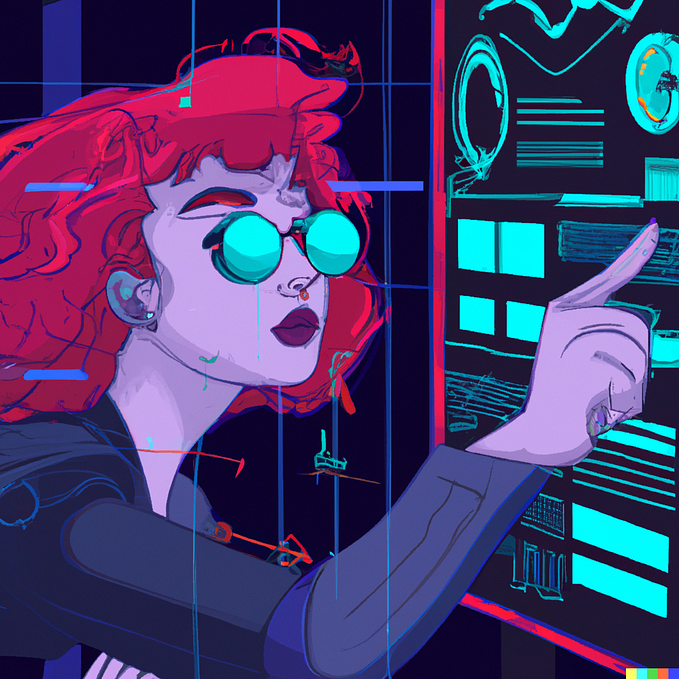AI-Powered Personalization in UX Design: Enhancing the User Experience through Customized Interactions
In today’s digital age, the user experience (UX) is crucial for the success of any product or service. With the increasing capabilities of artificial intelligence (AI), UX designers now have the opportunity to take personalization to the next level by leveraging AI to deliver customized experiences to users.
But what exactly is AI-powered personalization, and how can it be used to enhance the user experience? In this article, we’ll explore the concept of AI-powered personalization and how it can be implemented in UX design to create meaningful and engaging experiences for users.

What is AI-Powered Personalization?
At its core, personalization is the practice of tailoring a product or service to meet the unique needs and preferences of individual users. This can be achieved through various means, such as recommendation algorithms that suggest products or content based on a user’s past behavior, or personalized messaging that speaks directly to a user’s interests and needs.
AI-powered personalization takes this concept to the next level by using machine learning algorithms to analyze and understand user data in real-time, and then using this information to deliver personalized experiences in a more sophisticated and effective manner.
For example, an e-commerce website that uses AI-powered personalization might analyze a user’s browsing history, purchase history, and other data points to understand their preferences and interests. It could then use this information to recommend products that are more likely to be of interest to the user, or to present them with personalized offers and promotions.
In addition to recommending products or content, AI-powered personalization can also be used to personalize the overall user experience in a more holistic manner.
For example, an AI-powered virtual assistant might be able to adapt its language and communication style to match the user’s preferred tone and personality, or an AI-powered chatbot might be able to provide personalized support and assistance to users based on their specific needs and concerns.
Benefits of AI-Powered Personalization in UX Design
There are numerous benefits to using AI-powered personalization in UX design, both for users and for businesses.
For users, the most obvious benefit is a more personalized and relevant experience. When a product or service is tailored to meet a user’s specific needs and preferences, it is more likely to be useful and engaging for them. This can lead to increased satisfaction and loyalty, as well as a more enjoyable overall experience.
AI-powered personalization can also improve the efficiency of the user experience. By understanding a user’s needs and preferences, AI can provide more targeted and relevant recommendations, reducing the need for users to spend time searching for what they need. This can save users time and effort, and make it easier for them to find what they’re looking for.
From a business perspective, AI-powered personalization can also have a number of benefits. By delivering more personalized experiences, businesses can increase customer loyalty and retention, leading to higher sales and revenue. Personalization can also help businesses to stand out in a crowded market, as it allows them to offer a more unique and differentiated experience.
In addition, AI-powered personalization can help businesses to gain a better understanding of their users and their needs. By analyzing user data in real-time, businesses can gain valuable insights into user behavior and preferences, which can inform future product development and marketing efforts.
Implementing AI-Powered Personalization in UX Design
So, how can UX designers implement AI-powered personalization in their work?
Here are a few tips and best practices to keep in mind:
- Start with a clear understanding of your users and their needs and preferences
Before you start implementing AI-powered personalization, it’s important to have a clear understanding of your users and their needs and preferences. This will help you to identify the key areas of the user experience that would benefit most from personalization, and ensure that your efforts are focused on delivering value to your users. To gain this understanding, you may need to conduct user research, such as user interviews, surveys, and usability testing, to identify common patterns and trends. You may also want to analyze existing data sources, such as website analytics and customer feedback, to gain insights into user behavior and preferences.
2. Identify key areas for personalization
Consider which aspects of the user experience would benefit most from personalization, and focus on those areas first. For example, personalized product recommendations or personalized support and assistance may be particularly impactful for certain types of products or services.
3. Collect and analyze relevant data
In order to deliver personalized experiences, you’ll need to have a good understanding of your users and their needs and preferences. Make sure you’re collecting relevant data, and use machine learning algorithms to analyze this data and identify patterns and trends.
4. Test and iterate
As with any UX design effort, it’s important to test and iterate to ensure that your personalization efforts are effective. Use A/B testing and other methods to understand how different approaches to personalization impact user behavior, and adjust your approach as needed.
5. Consider ethical concerns
As with any use of AI, it’s important to consider the ethical implications of personalization. Make sure that your personalization efforts respect user privacy and do not discriminate against certain groups of users.









